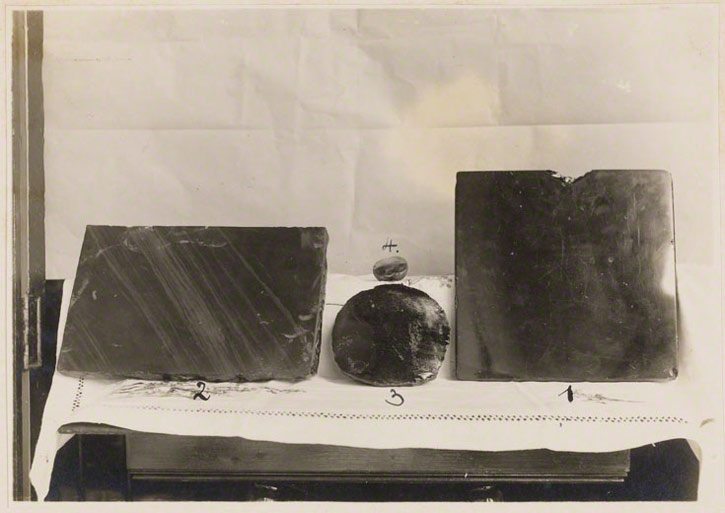
Through the Obsidian Mirror
The peoples of ancient Mexico used polished obsidian mirrors, or tezcatl, as instruments of divination. By gazing into a mirror's smoky depths, sorcerers traveled to the world of gods and ancestors. Obsidian mirrors are an apt metaphor for images of ancient Mexican sites and objects: they reflect the viewer as well as the object.
The obsidian mirror was the primary accessory of the supreme Aztec deity Tezcatlipoca, whose name means "smoking mirror." He is often depicted with an obsidian mirror on his chest, in his headdress, or replacing his right foot. Tezcatlipoca was the lord of the night and its creatures—above all, the jaguar, a powerful animal believed capable of crossing between the earthly realm and the underworld. Tezcatlipoca is sometimes represented as a jaguar, which was also a symbol of ancient Mexican rules. Jaguar pelts were reserved solely for their use.
Yucatan Mirror Displacements
In 1969, American artist Robert Smithson retraced the travels of writer John Lloyd Stephens, visiting Maya ruins in Chiapas and Yucatán. Although Smithson was traveling through Maya country, he believed he was impersonating the Aztec deity Tezcatlipoca, who he claims spoke to him, urging him to discard his guidebook and to make art that would collapse the gulf of time between the modern day and ancient Maya worlds.
Yucatan Mirror Displacements, his resulting art piece, exists as three interrelated but discrete works: the physical placement of the mirrors in the landscape; photographs of the mirrors; and an article in Artforum whose was text modeled after Stephens's Incidents of Travel in Yucatan (1843).
Smithson photographed mirrors near Maya ruins, in the jungle, and beside the sea. His images do not show tangible artifacts; rather, they capture the mirrors arranged in the natural elements and as they reflect their surroundings.
Smithson's term "mirror-travel" describes how the reflective surfaces of the mirrors highlight the displacement of time and space. Yet, as Smithson reminds us, art does not truly reflect life. Yucatán is elsewhere.
Ancient Mexican Mirrors
Auguste Génin, a Mexican collector of French descent, assembled a large collection of Pre-Columbian objects in Mexico City at the turn of the twentieth century.
Ancient Mexican mirrors, such as these from Génin's collection, survive today in many shapes and sizes. They were sometimes reused after the conquest—placed in Christian crucifixes or remounted as symbols of vanity, an aspect of the Catholic deadly sin of pride.

